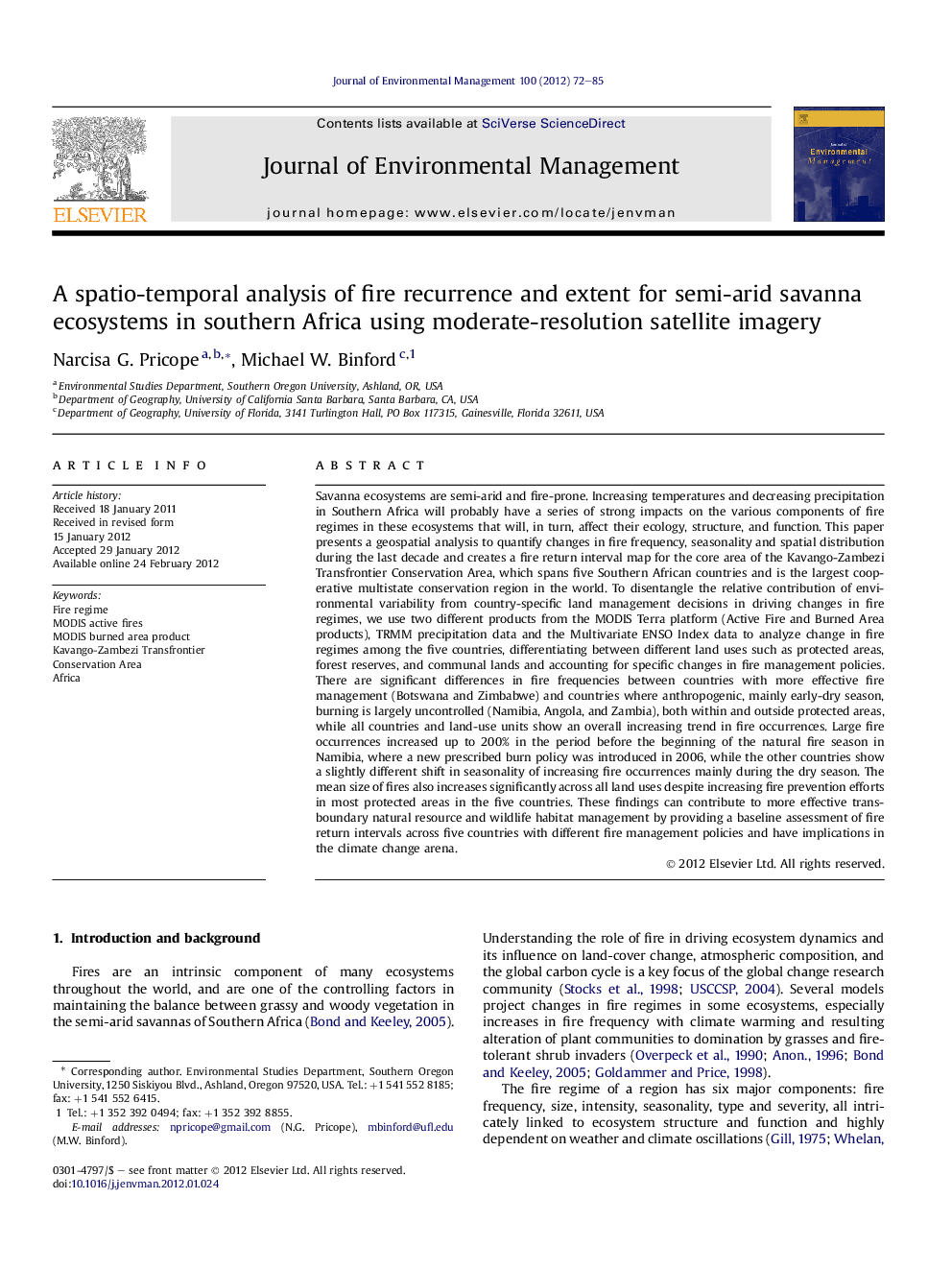| کد مقاله | کد نشریه | سال انتشار | مقاله انگلیسی | نسخه تمام متن |
|---|---|---|---|---|
| 1056754 | 1485312 | 2012 | 14 صفحه PDF | دانلود رایگان |

Savanna ecosystems are semi-arid and fire-prone. Increasing temperatures and decreasing precipitation in Southern Africa will probably have a series of strong impacts on the various components of fire regimes in these ecosystems that will, in turn, affect their ecology, structure, and function. This paper presents a geospatial analysis to quantify changes in fire frequency, seasonality and spatial distribution during the last decade and creates a fire return interval map for the core area of the Kavango-Zambezi Transfrontier Conservation Area, which spans five Southern African countries and is the largest cooperative multistate conservation region in the world. To disentangle the relative contribution of environmental variability from country-specific land management decisions in driving changes in fire regimes, we use two different products from the MODIS Terra platform (Active Fire and Burned Area products), TRMM precipitation data and the Multivariate ENSO Index data to analyze change in fire regimes among the five countries, differentiating between different land uses such as protected areas, forest reserves, and communal lands and accounting for specific changes in fire management policies. There are significant differences in fire frequencies between countries with more effective fire management (Botswana and Zimbabwe) and countries where anthropogenic, mainly early-dry season, burning is largely uncontrolled (Namibia, Angola, and Zambia), both within and outside protected areas, while all countries and land-use units show an overall increasing trend in fire occurrences. Large fire occurrences increased up to 200% in the period before the beginning of the natural fire season in Namibia, where a new prescribed burn policy was introduced in 2006, while the other countries show a slightly different shift in seasonality of increasing fire occurrences mainly during the dry season. The mean size of fires also increases significantly across all land uses despite increasing fire prevention efforts in most protected areas in the five countries. These findings can contribute to more effective transboundary natural resource and wildlife habitat management by providing a baseline assessment of fire return intervals across five countries with different fire management policies and have implications in the climate change arena.
► We analyze changes in fire regimes over the last decade in southern Africa.
► We compare changes in fire frequencies, seasonality, and area burned annually.
► We apply the analyses to five countries with different land uses and management.
► We find significant increases in fire frequencies in all land-use categories.
► These results are in line with drying trends in southern Africa.
Journal: Journal of Environmental Management - Volume 100, 15 June 2012, Pages 72–85